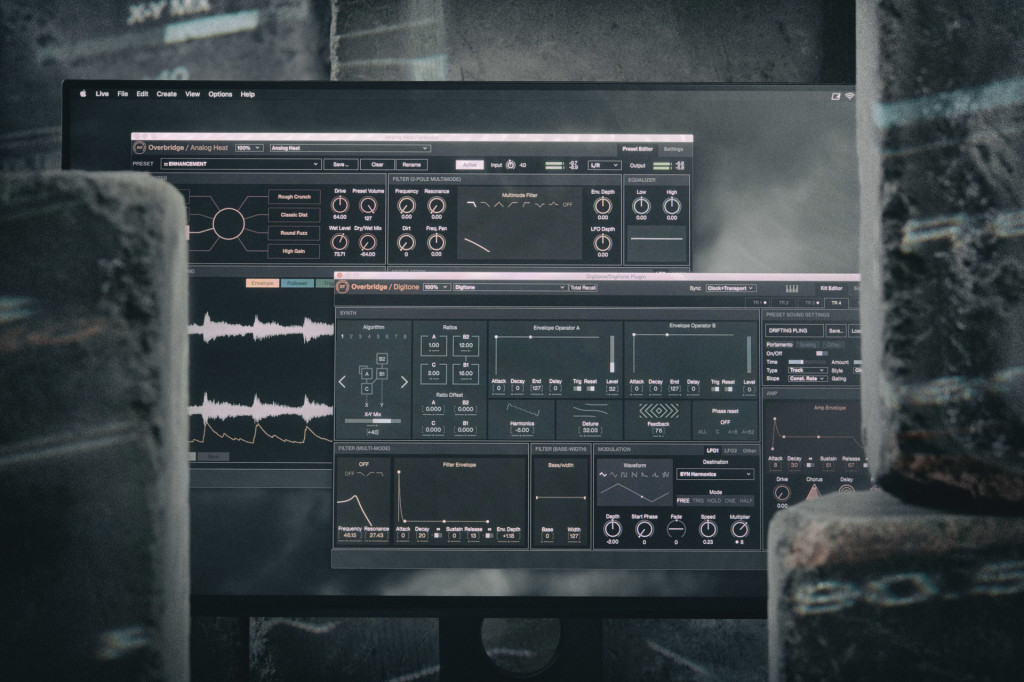For Elektron’s flagship instruments, Overbridge has evolved from a way of solving routing to a full-functioning computer portal to their machines.
To say that Elektron fans have been anticipating this would be an understatement. Obsessing over? Haunting Elektron, asking when or if it would ever happen? Trolling Elektron, convinced it wouldn’t? Closer.
The sheer depth of Overbridge 2.0 starts to indicate why there was a wait – and why it might have been worth it. First off, this is not for people who own the new entry-level Model:Samples and Model:Cycles. These budget-priced models are all about just twisting the knobs and playing, as we saw yesterday, so just have at it.
Overbridge 2.0 is ready now for the other current top-of-range – not a beta, not a preview, but the real deal, at last. And that includes support for Digitakt, Digitone, Digitone Keys, Analog Rytm MKI/MKII, Analog Four MKI/MKII, Analog Heat MKI/MKII, and Analog Keys, on Windows and macOS. (For specifics of which Elektron firmware and which OS, check the download page. Windows is Windows 10 only; the Mac is a little gentler with 10.12+.)
Yeah, no Octatrack. But the other instruments and drum machines are well covered.
What you get is both standalone and plug-in software that lets you treat the computer as a window into your Elektron box, and your Elektron box as an extension of your computer. That was always the idea and sales pitch of Overbridge, but now we see it in the flesh.
It really is like a massively beefed-up editor, but that’s a good thing. And it’s clear from all the editors out there that hardware owners now want that – so they can edit hardware settings more easily, and keep those settings with projects.
Viewed that way, there really is a connection to things like the Model:Samples. Elektron gear, irrespective of price, is now something you can use without having to wrap your head around menus. On the compact, budget gear, that’s because you’ve got all these knobs. But now on the high-end devices, you no longer have to sweat how to connect audio and record ideas or how to get into really customizing these boxes’ sounds.
This is a great trend, I think, because it means you’re no longer restricted to presets when you want to play. You can now assign LFOs and work with samples and parameter automation in a plug-in, or in the standalone software.
And that “oh, maybe I should turn this tweaking into a track” thing — well, that’s easier, too. If you just want to use the standalone software, you can now make multi-track recordings there and leave the DAW until later. If you prefer to work in the DAW, your Elektron box becomes your audio interface and like another plug-in. But then when you want to perform (uh, or stream or whatever it is we do now), you still have everything on the box – only now with easier management of the sounds, parameters, and projects you’ll need to play.

Specs:
VST and AU plug-ins
Visualize the sound design features of your device (modulation, samples, parameters, and so on)
Multichannel USB audio with the Elektron box as your sound card
Use analog instruments (Analog Heat, Analog Rytm, Analog Four) to process digital audio from your computer through their analog circuitry
Management of presets, samples, kits, and projects, including Total Recall inside the DAW
Multiple instrument support, if you own more than one Elektron box
Available now, “free” (well, once you own the hardware, that is!)
https://www.elektron.se/overbridge/
Let us know what you think, and if there’s more you want to know.